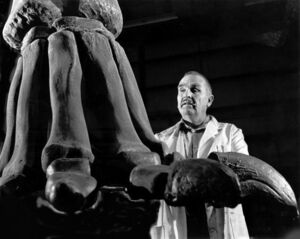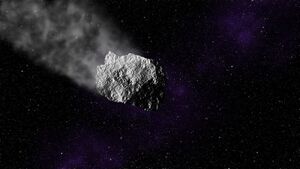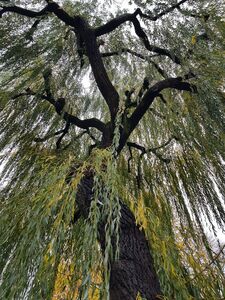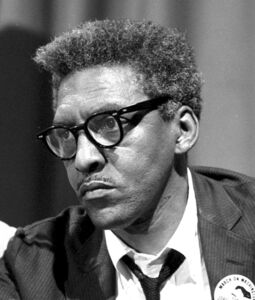
The Largest and Smallest Dinos Ever (Maybe)
T.J. Resler
T.J. Resler is an American author with a passion for telling stories. A former journalist, professor and research analyst, she researches and writes a wide variety of nonfiction and fiction for kids and adults. In this article, she describes how scientists study fossils, left behind traces of dinosaurs, to figure out which of them were record-breakers.
As you read, take notes on what scientists have learned about the largest and smallest dinosaurs.
The material is distributed in accordance with the CC BY-NC-SA. See details at: https://creativecommons.org/share-your-work/cclicenses/
0 lượt xem
Học trực tuyến

Anthony Benezet: Teaching Kindness
Ruben Brosbe
In this informational text, Ruben Brosbe describes the life of Anthony Benezet (1713-1784), a teacher and abolitionist from the 1700s. Abolitionists were people who believed in ending slavery at a time when slavery was still allowed by law.
As you read, take notes on how the author describes Anthony Benezet’s achievements.
The material is distributed in accordance with the CC BY-NC-SA. See details at: https://creativecommons.org/share-your-work/cclicenses/
0 lượt xem
Học trực tuyến

The Dinosaurs' Demise
T.J. Resler
T.J. Resler is an American author with a passion for telling stories. A former journalist, professor and research analyst, she researches and writes a wide variety of nonfiction and fiction for kids and adults.
In this article, Resler describes how an asteroid — a small, rocky object that circles the sun — might have led to the dinosaurs' demise, or death, 66 million years ago.
As you read, take notes on what scientists think happened after the asteroid hit Earth.
The material is distributed in accordance with the CC BY-NC-SA. See details at: https://creativecommons.org/share-your-work/cclicenses/
0 lượt xem
Học trực tuyến

Be Nice to Spiders!
Tracy Vonder Brink
There are thousands of different kinds of spiders that live all over the world. In this informational text, Tracey Vonder Brink shares interesting facts about these eight-legged animals.
As you read, take notes on how the author describes spiders.
The material is distributed in accordance with the CC BY-NC-SA. See details at: https://creativecommons.org/share-your-work/cclicenses/
0 lượt xem
Học trực tuyến

Calling Dr. Tree!
Tracy Vonder Brink
In this informational text, Tracy Vonder Brink tells the story of a widely used medicine.
As you read, take notes on how Edward Stone studied willow trees.
The material is distributed in accordance with the CC BY-NC-SA. See details at: https://creativecommons.org/share-your-work/cclicenses/
0 lượt xem
Học trực tuyến

Toad-ally Taking Over
Jacqueline Pratt-Tuke
Jacqueline Pratt-Tuke is a science and humanities teacher based in Washington, D.C. In this text, Pratt-Tuke describes how the cane toad has invaded, or overrun, Australia.
As you read, find evidence that shows the author’s point of view.
The material is distributed in accordance with the CC BY-NC-SA. See details at: https://creativecommons.org/share-your-work/cclicenses/
0 lượt xem
Học trực tuyến

Bayard Rustin
Britannica Kids
Civil rights are the rights given by a nation's government to all of its citizens. Bayard Rustin (1912-1987) was a civil rights activist, or a person who works to make sure everyone is given equal rights and is not treated unfairly based on their gender, race, nationality, age, disability, or religion.
As you read, take notes on Bayard Rustin’s work with other civil rights activists.
The material is distributed in accordance with the CC BY-NC-SA. See details at: https://creativecommons.org/share-your-work/cclicenses/
0 lượt xem
Học trực tuyến

The ISS: The Ultimate Group Project
Marie Droual
Marie Droual is a former scientist who loves sharing the wonders of the natural world with everyone. She is based in New York City. The International Space Station, also known as the ISS, is a spacecraft that orbits Earth and supports the astronauts who live there for extended periods of time. In this informational text, the author explains how different countries work together on the ISS to learn about outer space.
As you read, take notes on how different countries work together.
The material is distributed in accordance with the CC BY-NC-SA. See details at: https://creativecommons.org/share-your-work/cclicenses/
0 lượt xem
Học trực tuyến

The Big Splash
Tracy Vonder Brink
In this informational article, Tracy Vonder Brink discusses different theories, or ideas, behind how the moon was formed.
As you read, take notes on what scientists think happened during The Big Splash.
The material is distributed in accordance with the CC BY-NC-SA. See details at: https://creativecommons.org/share-your-work/cclicenses/
0 lượt xem
Học trực tuyến
Tìm kiếm nâng cao
Coming Soon

